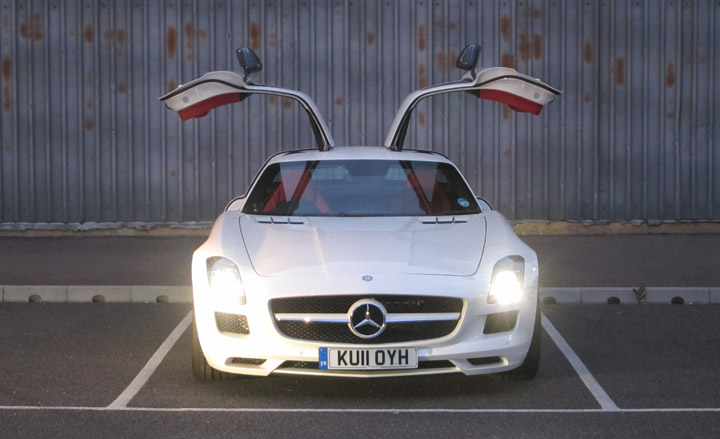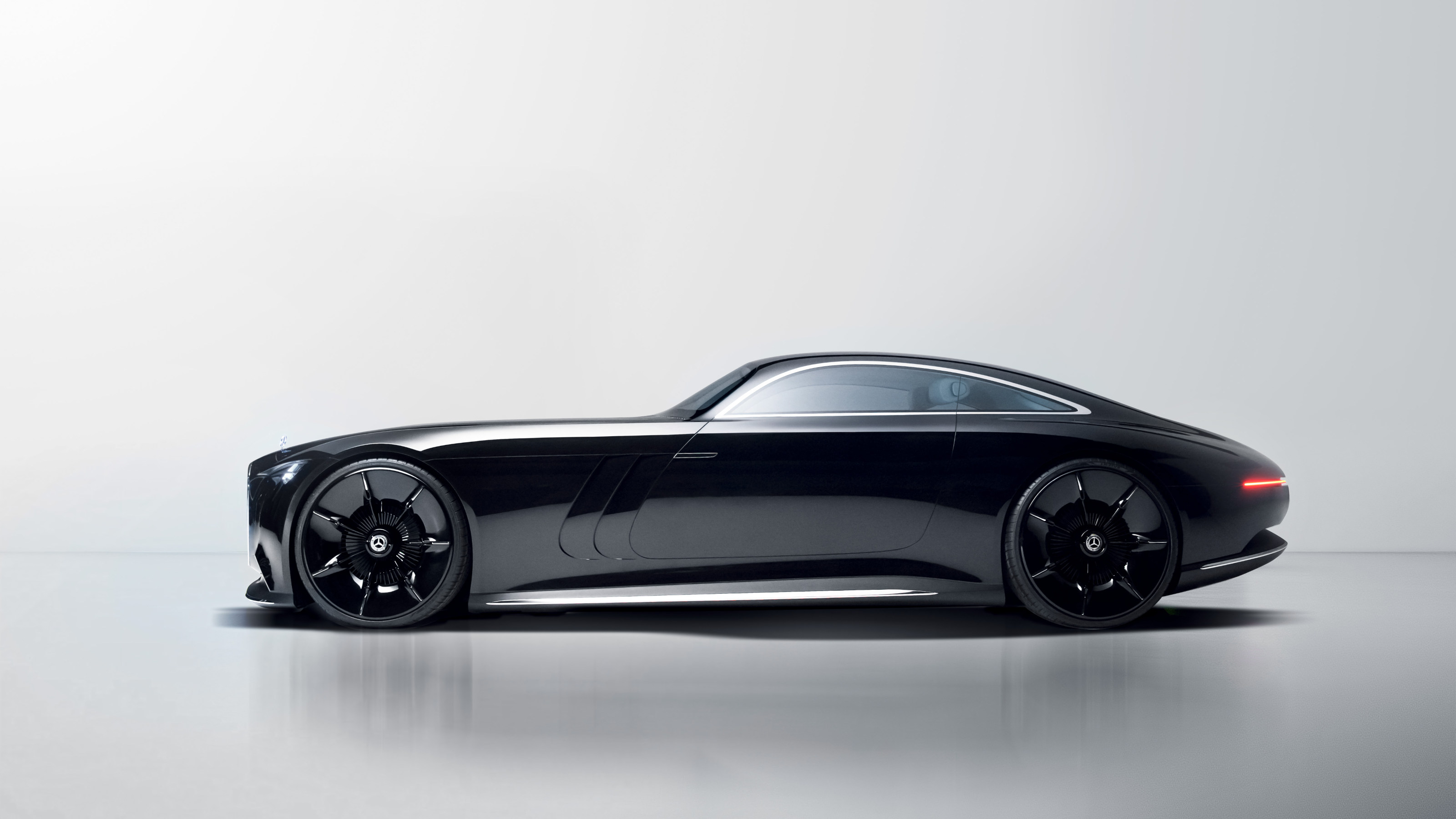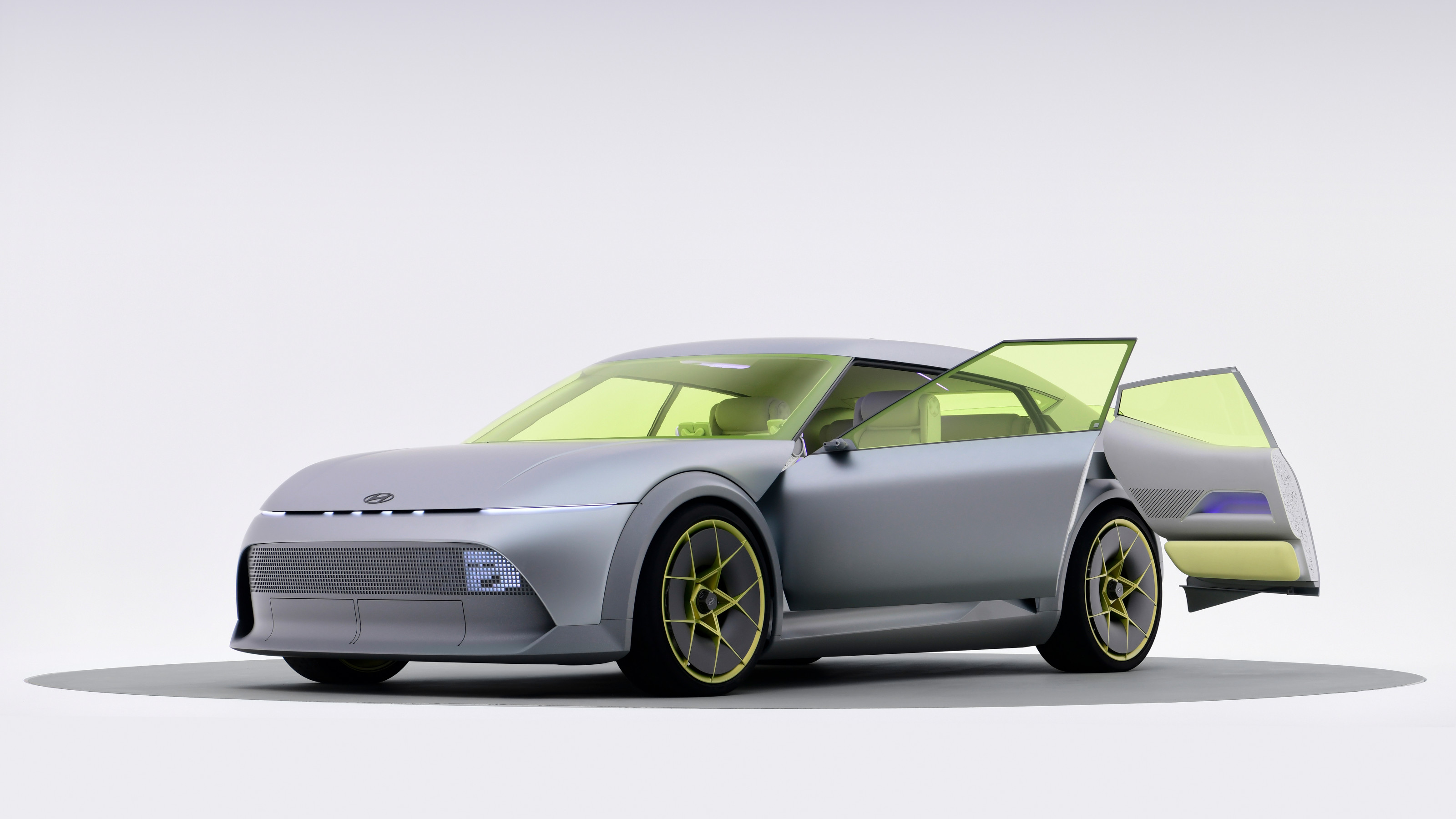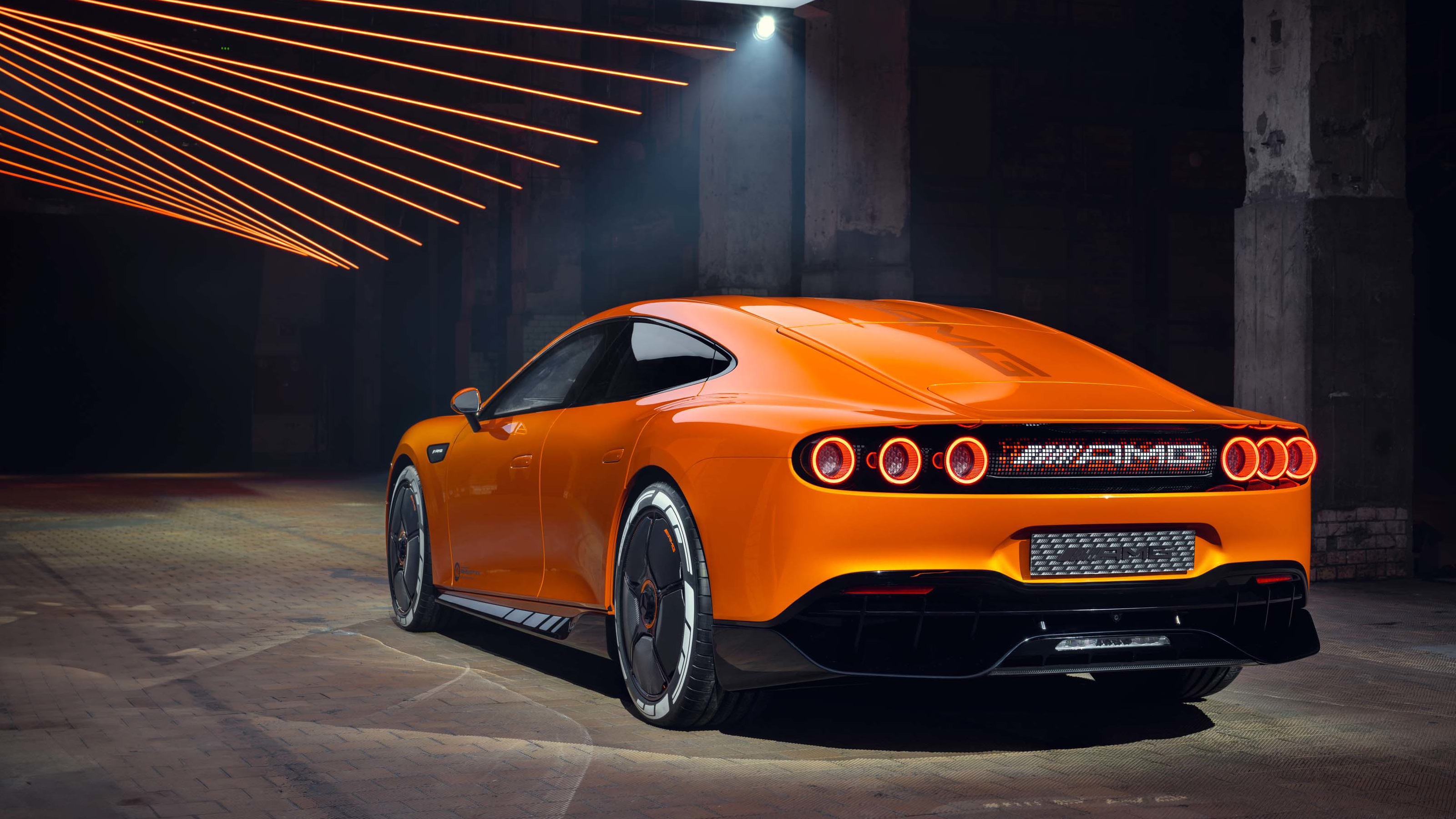Mercedes SLS AMG

Back at the turn of the century Mercedes collaborated with McLaren, the UK-based racing specialists, to create the Mercedes Mclaren SLR, a vast, swift and expensive 2-seater super-coupe designed to appeal to the emerging hypercar customer (an ostentatious UHNWI with a stable of improbably quick machinery and an addiction to owning the very latest thing). As the SLR evolved throughout its 7-year production life it became less and less of a Mercedes and more of a race car, arguably scattering the halo effect that's supposed to emanate from such an expensive and scarce machine.
Car design is about balance. On the one hand, a manufacturer wants to project an image of thrusting, tech-driven modernity, with products that are at the very cutting edge of what is possible. But on the other, no car maker can risk jettisoning its stock of evocative archive imagery, the classic designs that made the firm and which, one assumes, are still cluttering up the enthusiast's subconscious.
This is why manufacturers continue to make so much of their history. Usually referred to dismissively as 'retro design,' there's no denying that the decision to evoke such classic machines as the Mini, Fiat 500 and more has done wonders for design-centric car marketing, not to mention the bottom lines of the company's involved.
Mercedes doesn't really have a small car heritage. Best known for saloons (in Europe) and sporty convertibles (in the US), the company also has a long-running, highly conservative and instantly recognisable design language. Shaking things up hasn't been easy, and up until now Mercedes has chosen performance to be its most premium quality, rather than design.
Thanks to the input of AMG, the wholly-Mercedes-owned high performance subsidiary, there are now terrifically quick variants of almost every Mercedes model, from estate cars to big coupes. AMG hand-build their cars to extremely high tolerances, but to the uninitiated they look much like a regular Mercedes. Enter design.
A few years before SLR production was scheduled to stop, Mercedes looked to AMG, not McLaren, to build a supercar better suited to the three-pointed star. AMG had the performance knowledge and Mercedes handled the design, mindful of the pointed barbs that had been aimed at the SLR's rather ungainly form. The result was the SLS, smaller, slightly more svelte, less expensive and also aimed at an everyday life, not as a cosseted part of a far larger collection.
The principle point of reference for this new two-seater was the original 300SL, the iconic Gullwing of the 1950s, and those signature doors are present and correct. Elaborately engineered (explosive bolts blow the hinges in the event of a roll-over) and easy to operate, they turn the car into an instant statement the minute you plip the key and watch the handles glide electrically out from the bodywork.
Receive our daily digest of inspiration, escapism and design stories from around the world direct to your inbox.
The rest of the styling isn't quite as successful. Mercedes has long abandoned round headlights, even after a brief resurgence towards the end of the 1990s, and today's rather more angular face sits slightly uncomfortably at the end of the SLS's long bonnet. The result is a car that's decadent but not truly beautiful, with the glamour of its 1950s predecessor distinctly lacking (especially in the awkward rear three-quarter view). Few premium car makers seem able to play the elegance card with any conviction these days and Mercedes - a company with some serious form in this area - would have done well to follow them.
It's not all perfect. The SLS has flaws. First up is the form, redeemed partly by the fantastic party trick doors but simply not the symphony of curves and glass that was its spiritual predecessor. The interior is standard, sober and splendid Mercedes-Benz - no whacky stitching, fluorescent fabrics or unnecessary lights. True, the typeface on the speedometer is also rather brash - a bold, slanted, upper case italic, which is hardly the model of legibility. The expensive aftermarket B&O BeoSound system, with its 11 speakers and illuminated tweeters, is all very bling and brilliant sounding, but those pesky lights hover in the corner of your vision at night, constantly and falsely warning of another car's headlights in the rear-view mirror.
Around town, the SLS just about passes muster. Terrifically quick, but also noisy, wide and low, one doesn't feel too foolish trying to drive it around in a built-up area. There's a reason why luxury carmakers are now talking about hypercars, not just mere supercars. Because even at a cost of nearly 185K, with over 560hp and practically 200mph performance (not to mention its attention-grabbing doors), the SLS is still, just about, only a supercar.
In other words, it's still a rung below the insanity of the higher-end Lamborghinis, Bugattis, Paganis and Koenigseggs, cars that exist primarily as superlatives, stripped of almost all practicality as day-to-day modes of transport. The more extreme versions of the SLR were similarly pitched, but it's telling that Lamborghini's CEO recently spoke of the company's desire to build a 'usable Lamborghini', something that customers would happily slip into without the need for a special occasion. The SLS certainly ticks this particular box.
With the imminent arrival of a droptop model, the SLS is pushed even closer to practicality. There's even an all-electric model, the SLS E-Cell, on the horizon. An SLS might not be the choice of the committed aesthete, but no-one could deny its skewed but seductive blend of power, eccentricity and function.

Elaborately engineered (explosive bolts blow the hinges in the event of a roll-over) and easy to operate, they turn the car into an instant statement the minute you plip the key and watch the handles glide electrically out from the bodywork.

The rest of the styling isn't quite as successful. Mercedes has long abandoned round headlights, even after a brief resurgence towards the end of the 1990s, and today's rather more angular face sits slightly uncomfortably at the end of the SLS's long bonnet

Around town, the SLS just about passes muster. Terrifically quick, but also noisy, wide and low, one doesn't feel too foolish trying to drive it around in a built-up area

An SLS might not be the choice of the committed aesthete, but no-one could deny its skewed but seductive blend of power, eccentricity and function

The interior is standard, sober and splendid Mercedes-Benz - no whacky stitching, fluorescent fabrics or unnecessary lights

The expensive aftermarket B&O BeoSound system, with its 11 speakers and illuminated tweeters, is all very bling and brilliant sounding, but those pesky lights hover in the corner of your vision at night, constantly and falsely warning of another car’s headlights in the rear-view mirror

The typeface on the speedometer is also rather brash - a bold, slanted, upper case italic, which is hardly the model of legibility
Jonathan Bell has written for Wallpaper* magazine since 1999, covering everything from architecture and transport design to books, tech and graphic design. He is now the magazine’s Transport and Technology Editor. Jonathan has written and edited 15 books, including Concept Car Design, 21st Century House, and The New Modern House. He is also the host of Wallpaper’s first podcast.
-
 Everything to look forward to in fashion in 2026, from (even more) debuts to the biggest-ever Met Gala
Everything to look forward to in fashion in 2026, from (even more) debuts to the biggest-ever Met GalaWallpaper* looks forward to the next 12 months in fashion, which will see the dust begin to settle after a year of seismic change in 2025
-
 Five watch trends to look out for in 2026
Five watch trends to look out for in 2026From dial art to future-proofed 3D-printing, here are the watch trends we predict will be riding high in 2026
-
 Five travel destinations to have on your radar in 2026
Five travel destinations to have on your radar in 2026The cultural heavyweights worth building an itinerary around as culture and creativity come together in powerful new ways
-
 Gorden Wagener leaves the helm of Mercedes-Benz design after 28 years with the company
Gorden Wagener leaves the helm of Mercedes-Benz design after 28 years with the companyThe German designer is stepping down from the role of chief design officer at Mercedes-Benz. We look back at his influence and impact on the world of automotive and luxury design
-
 The Maybach Ocean Club is a floating members’ club for the super-rich
The Maybach Ocean Club is a floating members’ club for the super-richMercedes-Benz Design has announced the upcoming Maybach Ocean Club, a ship-based enclave inspired by automotive luxury
-
 The Mercedes-Benz Vision Iconic is automotive haute couture, a concept with cinematic style
The Mercedes-Benz Vision Iconic is automotive haute couture, a concept with cinematic styleThe Vision Iconic concept makes a play for a new approach to future luxury, blending art-deco excess with neo-gothic trimmings and monumental scale
-
 All the new electric cars and concepts revealed at Munich’s IAA Mobility 2025
All the new electric cars and concepts revealed at Munich’s IAA Mobility 2025Munich’s alternative motorshow is now in its third iteration, combining a traditional exhibition space with a conference and large-scale public activations on the streets of the city
-
 How will future car interiors take shape? London studio NewTerritory has a vision for automotive design
How will future car interiors take shape? London studio NewTerritory has a vision for automotive designDesign studio NewTerritory has set up a new automotive division to explore the future of car interiors. We interrogate the team
-
 A mighty concept coupé from Mercedes-AMG rewrites the electric performance car rulebook
A mighty concept coupé from Mercedes-AMG rewrites the electric performance car rulebookThe Mercedes-AMG Concept AMG GT XX is a four-door coupé that explores new approaches to battery tech, brake cooling and aerodynamics. As a sign of things to come, it can’t be ignored
-
 The Mercedes-Maybach SL 680 Monogram Series is an eyeful as well as a mouthful
The Mercedes-Maybach SL 680 Monogram Series is an eyeful as well as a mouthfulMercedes-Maybach’s first-ever sports car is comprehensively ‘wallpapered’ in the brand’s double-M design. We sampled this monogrammed machine on the coast of Ibiza
-
 Mercedes-Benz previews its next-gen people mover with an ultra-luxury EV concept
Mercedes-Benz previews its next-gen people mover with an ultra-luxury EV conceptThe Mercedes-Benz Vision V Concept is an art deco picture palace on wheels, designed to immerse passengers in parallel worlds as they travel